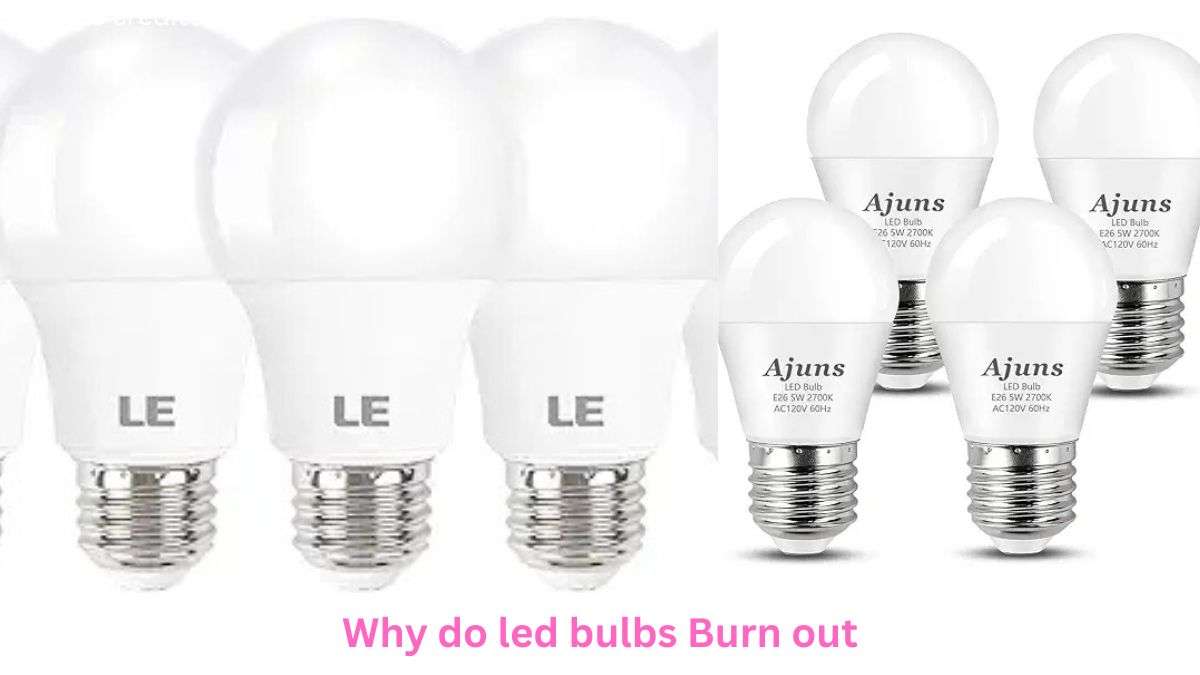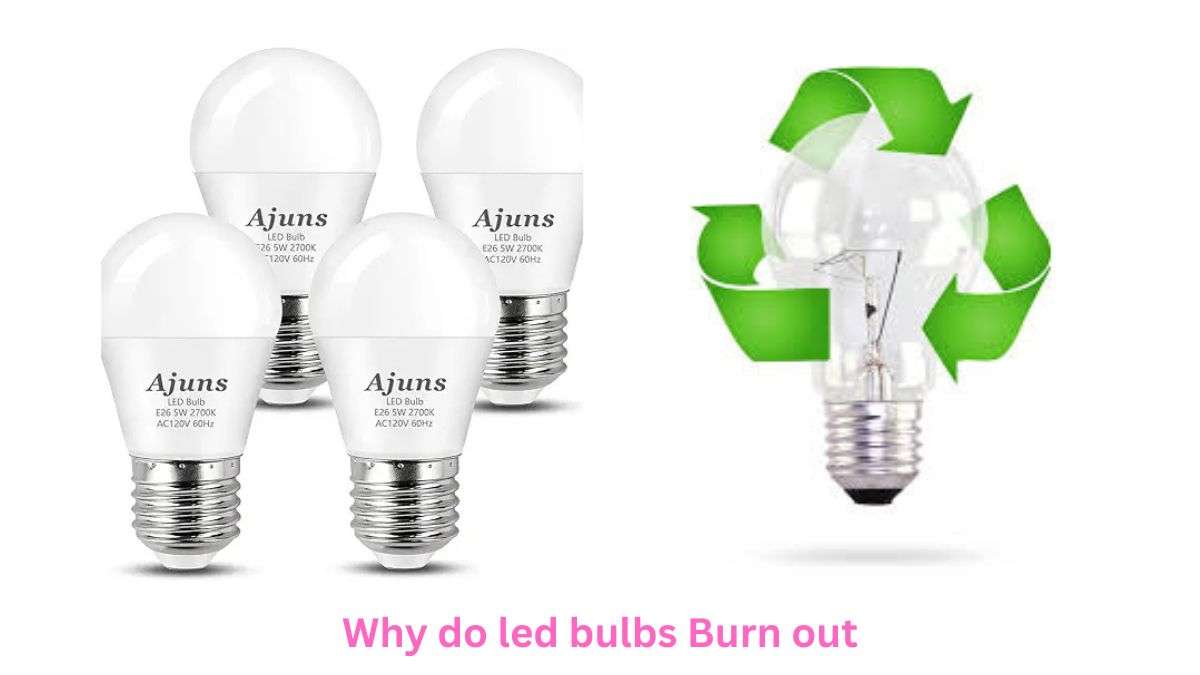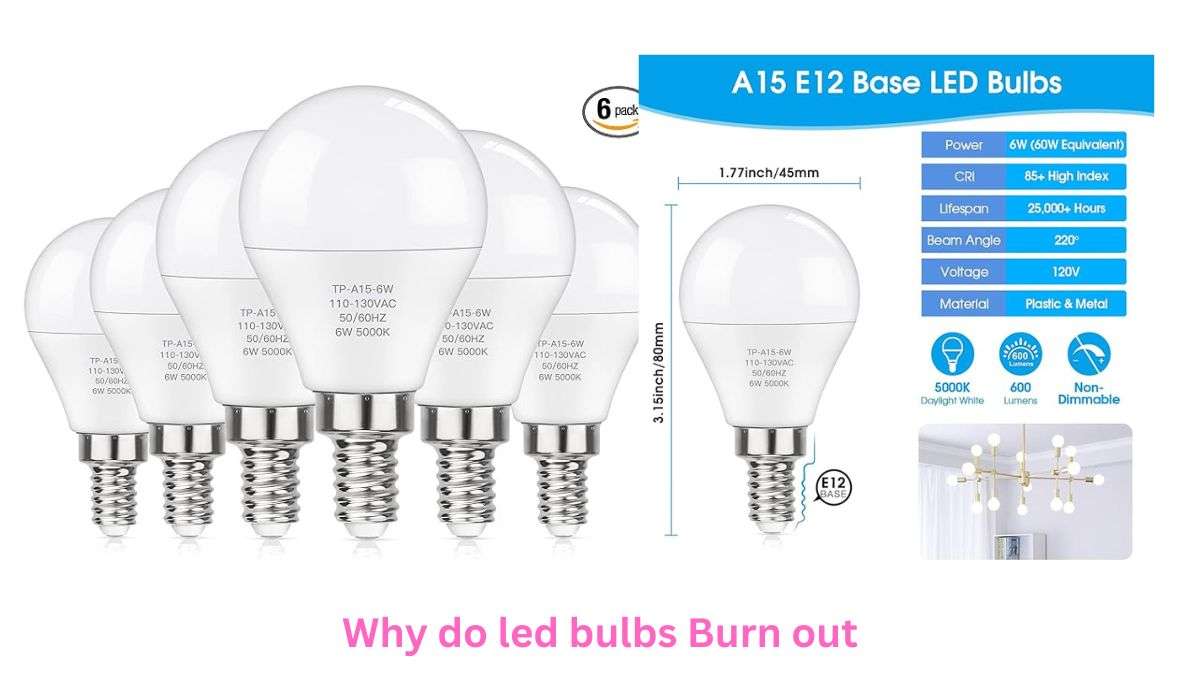Did you know that while LED bulbs are rated to last up to 50,000 hours, many fail long before reaching even half that lifespan? I’ve seen homeowners frustrated as their “long-lasting” LED bulbs burn out unexpectedly, often not knowing why. Understanding why do LED bulbs burn out can help you make the best use of your lighting investment. So, let’s dive into the common reasons behind LED burnout and what you can actually do to keep your LEDs glowing bright!
Common Signs: Why Do LED Bulbs Burn Out
Knowing the warning signs can help you catch LED issues early.
1. Early Warning Indicators: LED bulbs often give signs before failing completely, like dimming, flickering, or a subtle change in color. These small hints can tell you that a bulb may be nearing the end of its life.
2. Types of LED Malfunctions: Some LEDs start flickering, while others may lose brightness over time. Flickering often indicates a power issue, while dimming can suggest degradation within the LED components.
3. Dimming vs. Problematic Behavior: Normal dimming happens gradually and is expected, but rapid brightness loss or color shifting is a sign that something may be wrong.
4. Timeline of Typical LED Degradation: Good-quality LEDs degrade slowly over years. However, if your LED shows these issues early, it may indicate a defect or another problem.
Understanding LED Technology and Failure Mechanisms
To understand why LEDs can go out, it helps to know what’s inside them.
1. Basic Components: LED bulbs are built from light-emitting diodes (LED chips), heat sinks, and drivers. Each part plays a role in the bulb’s performance and longevity.
2. How LED Chips Produce Light: When electricity flows through the LED chip, it produces light. However, consistent performance depends on having high-quality chips.
3. Role of Drivers in Performance: The LED driver regulates the voltage and current, ensuring a steady flow. If the driver fails, the LED may burn out or flicker.
4. Common Failure Points: The heat sink, driver, and LED chips are common points where issues can arise. Poor-quality materials in any of these areas can lead to early failure.
Top Causes of Premature LED Burnout
Even though LEDs are designed to last, certain factors can shorten their lifespan.
1. Heat Management and Thermal Stress: LEDs are sensitive to heat. Excessive heat damages LED chips over time, causing premature burnout. Good-quality bulbs include heat sinks to manage heat.
2. Quality of Components: Low-quality materials or manufacturing defects can lead to early failure. That’s why investing in reliable brands is essential.
3. Voltage Fluctuations: Power surges and voltage fluctuations are another reason LEDs fail early. LEDs need a consistent voltage, and too much or too little can harm them.
4. Environmental Factors: High humidity, direct sunlight, or extreme cold can impact LED performance, especially if they’re not designed for those conditions.
5. Installation Mistakes: Incorrect installation can damage LEDs. Using incompatible fixtures, poor wiring, or skipping necessary ventilation can lead to premature burnout.
6. Compatibility with Dimmer Switches: Not all LEDs work with every dimmer switch. Using a non-compatible dimmer can cause flickering and other issues, stressing the bulb.
7. Frequent Switching: Turning LEDs on and off frequently can also wear them out, especially if they’re low-quality. Although LEDs handle frequent switching better than other bulbs, excessive cycling can still reduce their lifespan.
How to Choose Quality LED Bulbs
Choosing the right LED can make a difference in lifespan and performance.
1. Key Specifications: Look for bulbs with good lumens per watt (efficiency) and high CRI (color rendering index) for natural color. Temperature ratings are also critical for heat resistance.
2. Reliable Brands and Certifications: Go for reputable brands that meet certifications like Energy Star, which test bulbs for longevity and performance.
3. Price vs. Quality: Quality LEDs may cost a bit more but save money in the long run by lasting longer.
4. Understanding Warranties: Check for warranties. Brands that offer warranties often have higher standards and are more likely to replace bulbs that fail prematurely.
Installation Best Practices
Proper installation is key to getting the most out of your LED bulbs.
1. Fixture Compatibility: Make sure the bulb is compatible with your fixture. While not all LEDs are made for enclosed fixtures, some are.
2. Ventilation: LEDs need ventilation for heat dissipation. Using an LED in an enclosed or poorly ventilated fixture can lead to overheating and early failure.
3. Wiring and Connections: Ensure secure wiring and connection. Loose connections can cause flickering or burnouts due to inconsistent power flow.
4. Installation Techniques: Avoid handling the bulb with bare hands, as oils can damage the surface and lead to uneven heating. Handle LEDs with a clean cloth or gloves when possible.
Maintenance Tips to Extend LED Lifespan
Taking care of your LED bulbs can greatly improve their longevity.
1. Regular Cleaning and Inspection: Dust buildup can trap heat, so clean bulbs and fixtures regularly.
2. Optimal Operating Conditions: Keep your LEDs in a stable, moderate environment without excessive heat or moisture.
3. Monitor for Warning Signs: Pay attention to flickering or dimming as early warning signs and address them to avoid bigger issues.
4. DIY vs. Professional Maintenance: If you’re unsure, consult a professional for electrical issues. Proper diagnosis and repair can prevent further damage.
Troubleshooting Common LED Problems
LED issues aren’t always a sign of failure. Some problems are easily fixable.
1. Diagnostic Process: If you notice issues, check for simple things like loose connections or incorrect wiring.
2. Simple Fixes: Sometimes, switching the bulb to a compatible fixture or adjusting a dimmer can solve the problem.
3. Replace vs. Repair: If the LED is new and fails, it might be best to get a replacement under warranty.
4. When to Seek Help: If troubleshooting doesn’t work, it may be time to contact a professional electrician to assess any underlying issues.
Conclusion:
Understanding why LED bulbs burn out can save you both time and money. By choosing quality bulbs, installing them correctly, and practicing regular maintenance, you can significantly extend the lifespan of your LEDs. A little knowledge and preventive care go a long way in protecting your investment and keeping your home brightly lit for years to come. So, have you checked your LED installations lately?
Related articles:
Hi, I’m Malik Suhail—an SEO expert, web designer, and passionate blogger with 2 years of experience. I specialize in crafting content that is not only informative but also tailored to meet the needs of my readers.
I write about diverse topics, always striving to simplify complex ideas and provide valuable insights that resonate with my audience. Whether it’s about SEO strategies, web design trends, or blogging tips, I am committed to delivering well-researched, practical, and easy-to-understand information.
My mission is to help readers navigate the digital world with confidence and clarity. I believe in adding value through authentic content that inspires action and delivers results.


